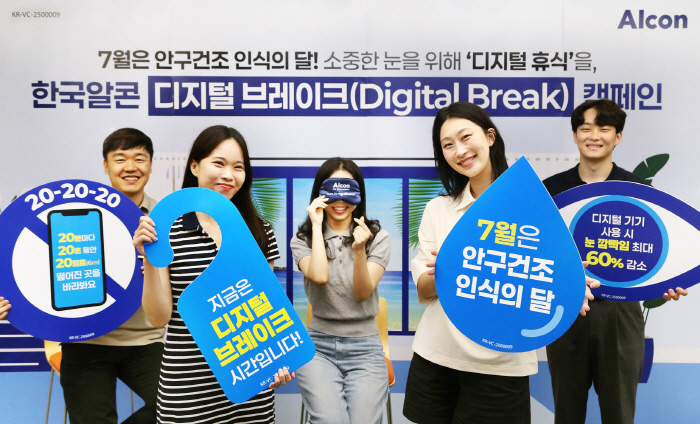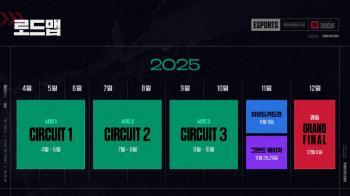Over 70% of digital eye fatigue with half a day of overwork...Conduct a regular eye break digital break campaign
Jul 23, 2025
|
In fact, according to a survey conducted by the Korea Communications Commission and the Korea Information and Communication Promotion Association, the average daily use of TV and smartphones by adults in 2024 is about 4.5 hours. On top of that, considering the average of eight hours that ordinary office workers look at computer screens while working, more than half of the day is spent with digital devices.
Long-term exposure to such digital screens is closely related to the induction of dry eye symptoms.
This is because the number of blinks while staring at the screen decreases by up to 60% compared to usual, causing tears to evaporate easily and the eye film to become unstable, causing 'Digital Device Dryness'. As of 2024 data, it is estimated that more than 1.6 billion people worldwide suffer from dry eye symptoms, and the number of dry eye patients in Korea is estimated to be more than 2.42 million as of 2024. This is equivalent to about 5% of the total population, and it is estimated that 1 in 20 people have been diagnosed with dry eyes, and the number of patients who have not been counted is higher.
'Digital Eye Dryness' is a global health problem that is gradually spreading regardless of age and gender, and can affect the overall quality of life beyond simple visual discomfort. Above all, dry eye management is essential even for daily life, which leads to poor work and academic performance, difficulties in reading and driving, and poor night vision.
Digital eye dryness is one of the typical symptoms of 'Digital Eye Strain', and the main symptoms include blurred vision, double vision, eye fatigue and irritation. Recent reports of global prevalence of digital eye fatigue exceeding 70% suggest that increasing digital device use and eye health are closely related. In fact, it is known that staring at a digital screen for a long time can be accompanied by various symptoms such as eye fatigue, irritation, headache, and vision loss as well as dry eyes.
|
The Digital Break campaign, designed to prevent dry eye symptoms from using digital devices and raise awareness of the importance of eye health care, focused on the need for regular eye rest for eye health, especially in an environment where people are exposed to digital screens such as mobile phones, tablets, computers, and TVs for a long time in their daily lives.
Korean Alcon executives and employees also participated in the campaign and delivered a message to modern people living in the digital age that it is important to take regular breaks while using digital devices to protect clear vision and moist eye health. In particular, he emphasized eye health care practice by practicing the '20-20-20 rule' that relieves eye fatigue in line with the theme of 'Digital Break', and creating various appearances away from digital devices, such as closing eyes and taking a rest.
Bang Hyo-jung, head of the Korea Alcon Vision Care division, said "Today, when long-term digital screen use has become commonplace, our eyes are playing a more important role than ever in experiencing the world. In order to inform us that eye health, like other parts of the body, requires constant care and attention in daily life, we have prepared a digital break campaign to mark Eye Dry Awareness Month."As a leading company in the eye care market innovation, Alcorn will continue to provide daily eye health solutions and at the same time contribute substantially to the bright vision of mankind by campaigning to improve awareness to establish the right eye health habits."
This article was translated by Naver AI translator.















